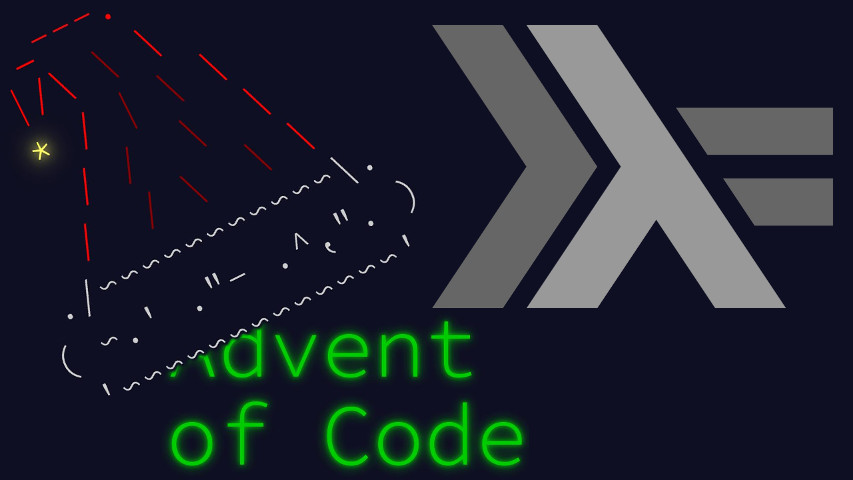Let’s tackle “Blizzard Basin”, today’s penultimate Advent of Code 2022 puzzle. We are to walk across a 2D grid, avoiding moving obstacles.
Not going to change a winning horse: this post is as literate Haskell as ever, leading the way with some imports.
import Data.Array ((!),accumArray,assocs,bounds,indices,inRange,listArray)
import Data.List (find,foldl')
import Data.Maybe (mapMaybe)
import Linear (V2(V2))
import qualified Data.Set as SetIf there’s one year change I’m going to stay with, it’s using
linear to handle my vectors.
type V = V2 IntAll I need to solve those pathfinding problems is a simple function to tell me where I’m allowed to step. In this puzzle it depends on the turn count, so I’ll take that as an input argument.
type Walkable = Int -> V -> BoolParsing ought to provide me with the following:
data Env = Env
{ walkable :: !Walkable
, entry :: !V
, exit :: !V
}How so? Let’s start by just reading the grid.
parse :: String -> Env
parse (lines -> ls) = Env{..} where
h = length ls
w = length (head ls)
grid = listArray (V2 1 1,V2 h w) (concat ls)Entry and exit point happen to be the first/last spot in the raw input.
Just entry = find (walkable 0) (indices grid)
Just exit = find (walkable 0) (reverse (indices grid))We still need that walkable function. Let’s divide and
conquer: delegate to checking whether there are any horizontal or
vertical blizzards going across that given position.
walkable t v@(V2 i j) =
inRange (bounds grid) v &&
grid!v /= '#' &&
not (any (\b -> b t v) (hBlizzards ! i)) &&
not (any (\b -> b t v) (vBlizzards ! j))Horizontal blizzards are detected by their representation in the puzzle input: greater to and less than signs. I’ll convert those to a function of time, modulo map width.
hBlizzards = accumArray (flip (:)) [] (1,h) $ mapMaybe mkHB (assocs grid)
mkHB (V2 i0 j0,c) = case c of
'>' -> Just (i0,\t (V2 _ j) -> (j-j0-t) `mod` (w-2) == 0)
'<' -> Just (i0,\t (V2 _ j) -> (j-j0+t) `mod` (w-2) == 0)
_ -> NothingConversely, vertical blizzards use other input characters and work along grid height.
vBlizzards = accumArray (flip (:)) [] (1,w) $ mapMaybe mkVB (assocs grid)
mkVB (V2 i0 j0,c) = case c of
'v' -> Just (j0,\t (V2 i _) -> (i-i0-t) `mod` (h-2) == 0)
'^' -> Just (j0,\t (V2 i _) -> (i-i0+t) `mod` (h-2) == 0)
_ -> NothingSolving part 1 is as simple as a BFS.
solve :: Walkable -> V -> V -> Int -> Int
solve walkable src dst = bfs (Set.singleton src) where
bfs open t
| dst `Set.member` open = t
| otherwise = go (Set.elems open) Set.empty where
go [] next = bfs next $! t + 1
go (p:ps) next
| not (walkable t p) = go ps next
| otherwise = go ps $ foldl' (\n dp -> Set.insert (p+dp) n) next
[ V2 0 0, V2 (-1) 0, V2 1 0, V2 0 (-1), V2 0 1 ]Really, the only tricky part in that was remembering that waiting in place is a very viable option.
For part 2, we just tack on a return-and-back trip to the end of part 1.
main :: IO ()
main = do
Env{..} <- parse <$> getContents
let t1 = solve walkable entry exit 0
t2 = solve walkable exit entry t1
t3 = solve walkable entry exit t2
print t1
print t3This concludes today’s solution. Can’t wait for the final puzzle!



